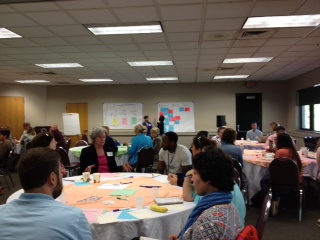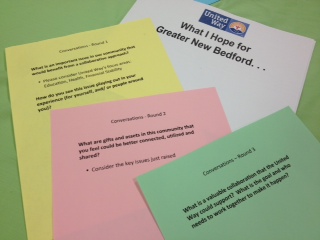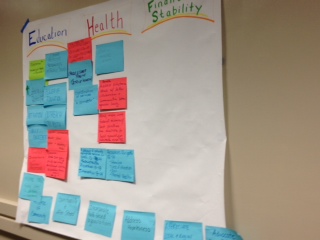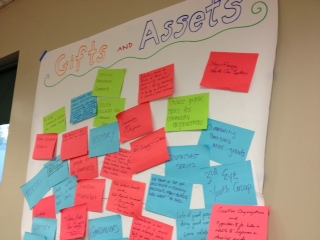United Way organizations around the country are reinventing the role they play in their communities from their traditional role of fundraising for social service agencies through workplace campaigns. As this paper, Charting a Course for Change describes, United Ways are serving as a community convener, engaging local partners (e.g., residents, businesses, local government, social service agencies) to collaborate to make more substantial progress in key areas of education, income and health. This approach to collaborative community change draws on the framework of collective impact – where diverse actors in the community develop a shared vision, connect and coordinate action and measure the results over time.
New Directions Collaborative has had the opportunity to work with the United Way of Greater New Bedford over the last year as they embarked on launching a collective impact initiative. While the upside potential of the change was exciting, the process needed to be navigated skillfully to build understanding, support, and commitment to this collaborative approach. We worked with a design team of United Way staff, board members, and community leaders to design a process to engage the community. Combining their local knowledge and connections with our experience in collective impact and process design enabled us to create an effective engagement process.

A series of three Community Conversations were held to enable the community to provide direction to the focus and design of United Way’s collaborative initiative. Each community gathering was designed, not only to generate input for the initiative, but also as an experience of cross-sector collaboration, where people could connect, share knowledge, and access the collective wisdom of the larger community. People with diverse perspectives and backgrounds were invited, including citizens and those who working various issues, e.g., substance abuse, afterschool programs, education, health, city government. Each gathering drew 30-50 people.
At each gathering, United Way shared it’s intent to host a collaborative initiative and participants talked in small groups, using the World Café process. The following questions were explored, rotating after each round:

- What is an important issue in our community that would benefit from a collaborative approach? How do you see this issue playing out in your experience (for yourself, and/ or people around you)?
- What are gifts and assets in this community that you feel could be better connected, utilized and shared?
- What is a valuable collaboration that the United Way could support? What is the goal and who needs to work together to make it happen?
It was inspiring to walk through the room and hear lively conversations and stories being shared by people with different perspectives who rarely, if ever, get the chance to meet and talk. Many of these people were working hard within their social service organization, school, or business – working on similar or overlapping issues, yet not always aware of what each other was doing. A gathering like this began to strengthen connections and understanding among these various parts of the community. As Peter Block writes in his book Community: The Structure of Belonging “the social fabric of a community is created one room at a time.”
 After each round of conversation, we invited each group to post their ideas, one per post-it note, onto a wall chart. This gave a visual sense of the whole group’s input. As this photo shows, issues related to education were the ones that got the most interest; in particular, better supporting families in addressing challenges such as language barriers and substance abuse so they can support their children’s educational success.
After each round of conversation, we invited each group to post their ideas, one per post-it note, onto a wall chart. This gave a visual sense of the whole group’s input. As this photo shows, issues related to education were the ones that got the most interest; in particular, better supporting families in addressing challenges such as language barriers and substance abuse so they can support their children’s educational success.
The results of the conversations about the gifts and assets of the community that could be better utilized were posted onto a wall chart of a basket that was overflowing. People spoke of the collaborative spirit in the community, the many great organizations doing great work, rich cultural diversity, and beautiful natural resources. So often our collective focus is on problems to be solved and what is not working. Several participants expressed gratitude that we devoted the time to have the community reflect on its gifts and assets.

Each gathering generated interest and enthusiasm for the potential of a collaborative initiative. People voiced support for United Way using its position as a respected well-connected entity to organize different stakeholders to collaborate. They recognized the potential of aligning parts of community that are not well connected now.
In closing, United Way asked people to write on a paper “What I hope for Greater New Bedford…” and hang these on a clothesline. These were integrated into a video that includes images of the Community Conversations. Building on this direction and support from the community, work is now underway to design the next phase of this initiative. Stay tuned!
